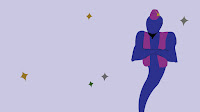Essay
Abstract:
This essay
will focus on the recent revival of the handmade within the area of Graphic
Design, covering specifically the resurgence of hand-drawn illustration as well
as the rise in craft based processes like paper cutting, letterpress, screen
printing and the overall hand-made aesthetic that is regaining popularity in
the world of Graphic Design. The reasons behind this revival will also be
considered, taking in to account the effects of technology and of the mass
production trend brought about by industrialisation, which influenced the ideas
of the modernist movement, and also looking in to the recent desire for a
return to design that is concerned with the individuality and authenticity that
comes with handmade processes, and design that is not solely screen based. This
essay will also cover the ways in which the handmade aesthetic has been adopted
in recent years on the commercial front, for example, in magazines of all
genres hand-drawn illustrations are now regaining popularity in place of
digital photography.
Visual Appendix – Aims and Objectives:
The design outcomes I want to achieve are a set of
experimental works based around the area of my practice that I am most
interested in: the handmade, and craft based processes. From looking at the
ideas/issues raised in my essay, my aim is to recreate the digital imagery and
text that is featured in commercial magazines, focusing on magazine covers, but
using only analogue mediums/materials and hand-based processes.
My chosen aim is a
reaction to the idea that as a designer of the future I am to consider the
relevance of the handmade within my practice, and I have chosen to do this
through looking at a popular print-based artefact that today is mostly comprised
of digital imagery, and is quite a prevalent area for graphic designers to
employ their skills in terms of editorial and layout design.
Typical magazine shelf featuring the magazines that have
employed the use of digital photography for an eye-catching front cover [photo]
Visual Appendix – Methodology:
-
* -The hand has to be employed in all areas of the
creation
- - The only materials that can be used are analogue
mediums, for example; pencil, ink, thread, paper, card, paint…
-
- Each experimental work will demonstrate a different
process that has it’s principle based in a specific craft skill
-
- At the beginning of each experiment a suitable and
appropriate magazine cover will be selected, featuring digital photography to
be recreated using handmade processes
Visual Research Question:
To employ handmade processes to recreate imagery that has
been created digitally, considering how craft based skills can be relevant to
designers of the future.
Keywords:
Handmade, Illustration, Craft, Process











